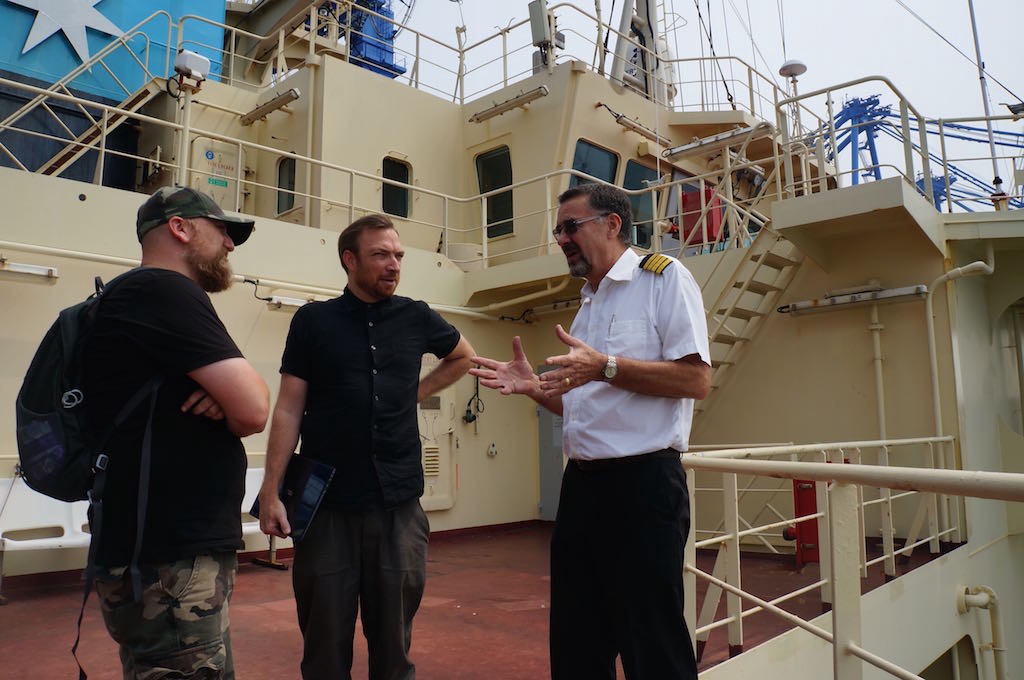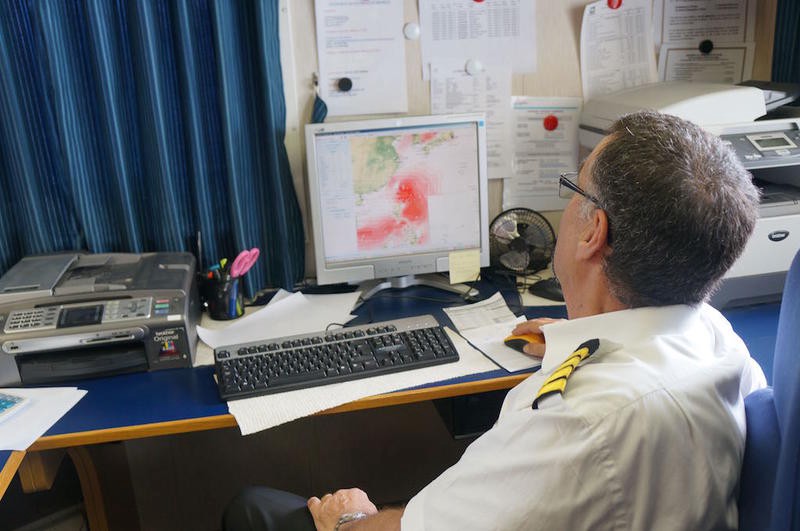

Read the next installment: “From Whisky to Wifi“
Read the previous installment: “The Ship Is Your Best Lifeboat“

“I’m excited about this week–do you know why?” asks the captain as we enter his office for the first time. He stands up from the desktop computer where he’s responding to emails. White crisp shirt with epaulets of black and four gold stripes. Polished shoes. British accent. Firm handshake.
“Because you’ve got passengers? New people to talk to?” we volunteer. Maersk, his employer, doesn’t carry passengers aboard its cargo ships normally, but somehow Unknown Fields has wrangled four of us aboard the Seletar. I’m not entirely sure how. I’m holding the bundles of paperwork and certificates needed to come this far. Medical examination results. Vaccination certificates. Criminal background check.
“That’s not it,” the captains says. “I’m excited because when we get to Hong Kong I’m getting off the ship with you. I’m retiring. This is my last voyage.”
Captain Argent has been at this since he was a teenager. Starting as an apprentice out of school, he worked his way up the ranks to captain. He’s never left the company, but it has changed around him. The decline of passengers traveling by sea due to air travel. The move from break bulk cargo to containers. Rebranding and company acquisitions, from Cunard White Star, to P&O, to P&O Nedlloyd, to Maersk. The Seletar still carries containers bearing the defunct Nedlloyd branding.

“We were going to do one more after this, but it would mean crossing the Pacific in winter,” he adds.
We? He introduces us to his wife, Helen, who enters from the adjoining Master’s Quarters. She also lives aboard. They spend three months together on the ship, then three months at home near Liverpool. She’s spent almost as much time at sea as the captain, apart from when she was raising their children while working as a midwife.
They both have plenty of stories to recount about life at sea. They start by telling us about the last voyages of other captains they’ve encountered. The one whose moorings broke in port, the entire ship blown across the harbor into the breakwater. The one who failed to pay attention and ran into an island a mile long before getting a job with the salvage company recovering the vessel he ran aground.
The captain shows us the weather forecast for the week ahead. A typhoon is predicted to sweep across Taiwan, then north toward our course. Hopefully not all last weeks at sea are eventful. We don’t dwell on the topic.
“Come on, give me the keys. Let’s go show them the view,” interjects Helen, leading us one floor up to the ship’s bridge above.

Read the next installment: “From Whisky to Wifi“
Read the previous installment: “The Ship Is Your Best Lifeboat“
Please note that this work is not available for republication under the terms of a Creative Commons license, as per most of our other content.

How We Get To Next was a magazine that explored the future of science, technology, and culture from 2014 to 2019. Postcards From A Supply Chain follows Dan Williams as he traces consumer goods back through the global shipping system to their source. It was organized by the Unknown Fields Division, a group of architects, academics, and designers at the Architectural Association School of Architecture in London.
